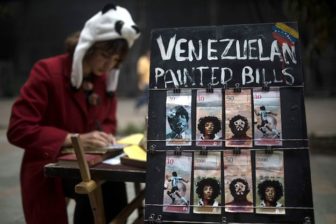This article is adapted from AQ’s print issue on China and Latin America. To see the rest of our list, click here. | Leer en español
China’s cultural bureau had four rules for Cuauhtémoc Medina as he prepared to oversee the 2018 Shanghai Biennial for contemporary art: no Mao, no nudity, no violence and no Tibet.
Medina, the 53-year-old chief curator of Mexico City’s University Museum of Contemporary Art (MUAC), said that putting together one of Asia’s most important art shows despite the Chinese government’s strict limits on personal expression was a matter of give and take.
“Because it’s out in the open, censorship in China is a negotiation, a ping pong of proposals and counterproposals,” Medina told AQ. “I was able to win a few sets.”
That doesn’t mean Medina is resigned to censorship — in an award-winning career that has often challenged artistic sensibilities in Mexico and beyond, it’s nothing new. Medina said the “arbitrary, invisible” pressures surrounding his 2014 decision to show a work by American artist Jill Magid at the MUAC were more intense than the matter-of-fact censorship he faced in China.
“China is not unlike Mexico under the PRI, in that there are degrees of social and cultural freedom, but then there are lines that simply aren’t meant to be crossed,” Medina said.
Key to successfully navigating the political sensitivities of the biennial, Medina said, was a “harmonious, complicit” relationship with the Power Station of Art, China’s only publicly funded contemporary art museum and the host of the biennial. “Over the course of putting together the biennial I came to see that their commitment to art was sometimes incredibly brave,” Medina said. “Their ethical position would be hard to match.”
Medina’s curation itself doesn’t shrink from uncomfortable questions. Based on a neologism he came across in a poem by American writer E.E. Cummings, the biennial’s theme, “Proregress,” tests the idea of inevitable cultural and political progress — not just in China, but in the West as well. One example is a work by Argentine artist Enrique Ježik whose title, “One Step Forward, Two Steps Back,” invites critical consideration of Mao’s Great Leap Forward. “A curator’s job is to work with limits of representation, and then try to push them,” Medina said. “Censorship is a challenge, not an absolute impediment.”
—
Russell is a senior editor and correspondent in Mexico City for AQ. Follow him on Twitter @BenPaulRussell









